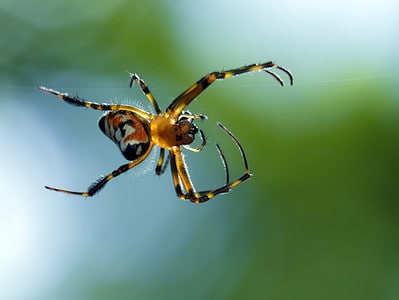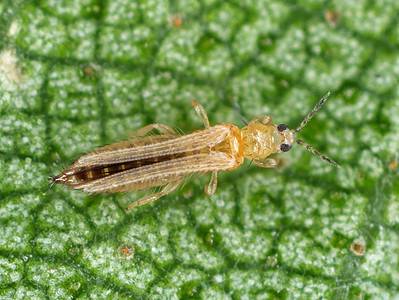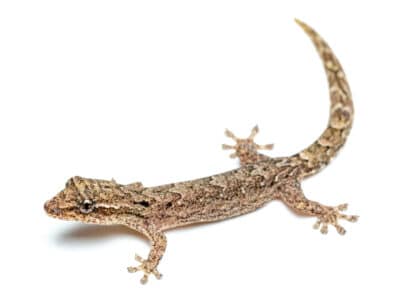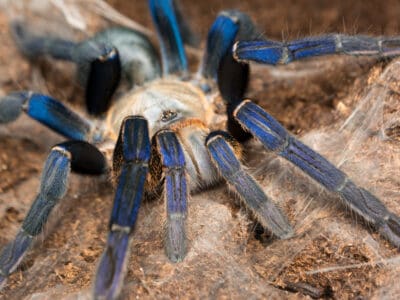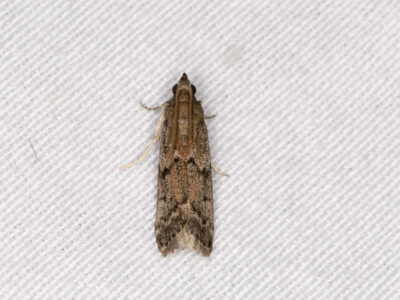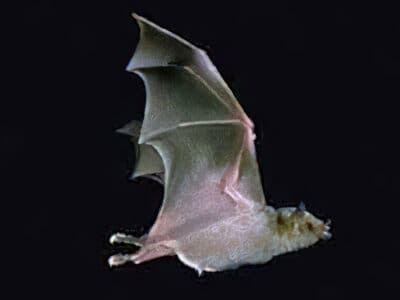Barn Owl
Tyto alba
Barn owls are the most widely distributed members of the owl family, known for their stark white faces and haunting calls.
Advertisement
Barn Owl Scientific Classification
- Kingdom
- Animalia
- Phylum
- Chordata
- Class
- Aves
- Order
- Strigiformes
- Family
- Tytonidae
- Genus
- Tyto
- Scientific Name
- Tyto alba
Read our Complete Guide to Classification of Animals.
Barn Owl Conservation Status
Barn Owl Facts
- Main Prey
- Rodents, Fish, Birds, Insects
- Fun Fact
- Barn owls are the most widely distributed members of the owl family, known for their stark white faces and haunting calls.
- Distinctive Feature
- White heart-shaped face and large, dark eyes
- Wingspan
- 75cm - 110cm (30in - 43in)
- Habitat
- Open clearings, low-lying woodland, farmland, cities, and buildings like barns
- Diet
- Carnivore
- Lifestyle
- Solitary
- Favorite Food
- Rodents
- Type
- Bird
- Average Clutch Size
- 4
- Slogan
- Found everywhere around the world!
View all of the Barn Owl images!
Barn owls are the most well-known member family of owls known for their stark white faces and haunting calls.
They are extremely widespread, one of the most widespread bird species on earth. Barn owls primarily keep the rodent population in check wherever they live by preying on rats and mice. In many cultures, they are seen as harbingers of death or symbolize the afterlife.
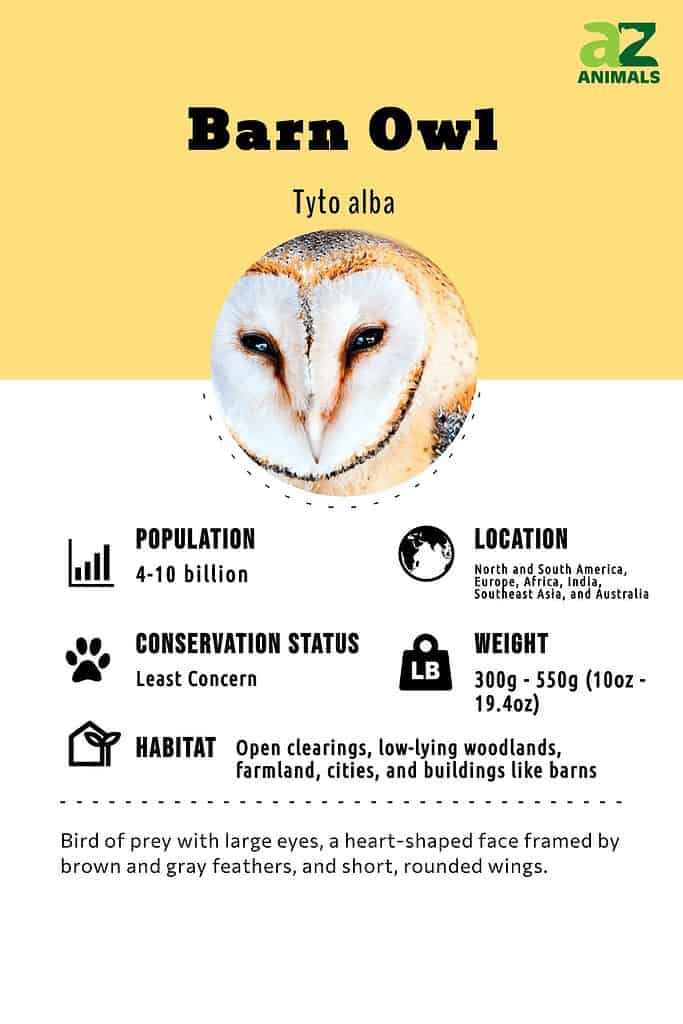
Incredible Barn Owl Facts!
- In England, these owls usually live in graveyards. This has given them a reputation as an omen of death.
- Barn owls are birds that swallow prey whole and then regurgitate the undigested portions as a pellet.
- The distinctive shape of their face helps them detect quiet sounds that their prey makes.
- Female owls are about 10% heavier than male owls, and they mate for life
- Captive owls can live up to 20 years.
You can check out more incredible facts about barn owls.
Scientific Name
The scientific name of the barn owl, Tyto alba, means “white owl.” This scientific name comes from the Greek word for owl, tyto, and the Greek word for white, alba. Its original name, given by taxonomist Giovanni Antonio Scopoli was Strix alba. However, the genus strix was eventually reserved for wood owls in the other major owl family Strigidae.
Because these owls are so widespread, there are over 25 subspecies that vary in size and coloration.
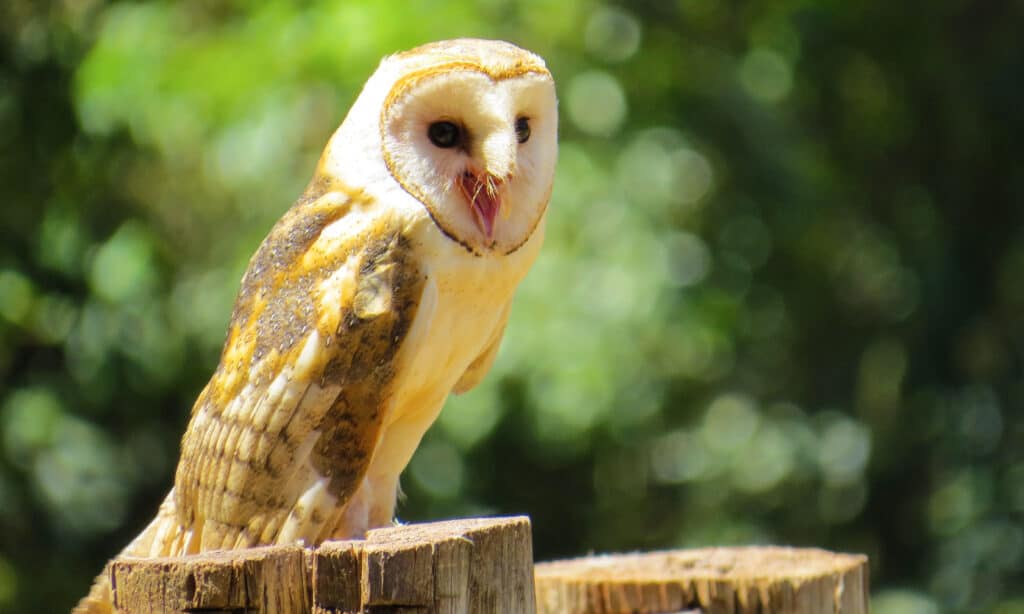
The American Barn Owl is one of over 25 subspecies of barn owls.
©DEBORA DUARTE LISBOA/Shutterstock.com
Evolution
Based on existing fossil records, barn owls existed during the Eocene Era. There are four extinct species of barn owls which include:
- Genus Nocturnavis (Late Eocene/Early Oligocene)
- Genus Necrobyas (Late Eocene/Early Oligocene – Late Miocene, France)
- Genus Selenornis (Late Eocene/Early Oligocene of Quercy, France)
- Genus Prosybris (Late Eocene/Early Oligocene of Quercy)
Types of Barn Owls
There are 35 sub-species of barn owls which are distributed across North and South America, Europe, Asia, and Australia, listed below:
- North American Barn Owl (Tyto alba pratincola) – Native to the United States and Central America. This subspecies has one of the largest ranges of any of the races.
- Central American Barn Owl (T. a. guatemalae) – Native to Guatemala, Nicaragua, Salvador, and Panama.
- Bahamian Barn Owl (T. a. lucayana) – Native to Ranges throughout the Bahamas.
- Cuban Barn Owl (T. a. furcata) – Native to Cuba, Grand Caymans, and Jamaica.
- Subandean Barn Owl (T. a subandeana) – Native to Columbia and Ecuador.
- Columbian Barn Owl (T. a. contempta) – Native to Columbia, Ecuador, Peru, and Venezuela.
- Hellmayr’s Barn Owl (T. a. hellmayri) – Native to Venezuela into Brazil.
- Brazilian Barn Owl (T. a. tuidara) – Native to Brazil, Chile, and Argentina.
- Tortugan Barn Owl (T. a. glaucops) – Native to the islands of Tortuga and Hispanolia in the West Indies.
- Dominican Barn Owl (T. a. nigrescens) – Native to the island of Dominica in the West Indies.
- St. Lucia Barn Owl (T. a insularis) – Native to the Lesser Antilles in the West Indies, including St. Lucia, Grenada, and St. Vincent.
- Curacao Barn Owl (T. a. bargei) – Native to the island of Curacao off the coast of Venezuela.
- Galapagos Barn Owl (T. a. punctatissima) – Native to James Island in the Galapagos Islands.
- British Barn Owl (Tyto alba alba) – Native to British Isles, France, Switzerland, Italy, Spain, Greece, and North Africa.
- European Barn Owl (T. a. guttata) – Native to Sweden, Denmark, Netherlands, Germany, Poland, Russia, Austria, Hungary, Bulgaria, and the Crimea.
- Madeiran Barn Owl (T. a. schmitzi) – Native to the island of Madeira off the coast of Portugal.
- Ernest’s Barn Owl (T. a. ernesti) – Native to the islands of Corsica and Sardinia in the Mediterranean.
- Canary Island Barn Owl (T. a. gracilirostris) – Native to the Eastern Canary Islands off the coast of Africa.
- Cape Verde Barn Owl (T. a. detorta) – Native to the islands of St. Vincent and Santiago in the Cape Verde Islands off the coast of west Africa.
- West African Barn Owl (T. a. poensis) – Native to the island of Fernando Po off the coast of West Africa.
- Sao Thome Barn Owl (T. a. thomensis) – Native to the island of Sao Thome off the coast of West Africa.
- African Barn Owl (T. a. affinis) – Native to the African mainland from Gambia in northwestern Africa to the southern tip of the continent.
- Madagascan Barn Owl (T. a. hypermetra) – Native to Madagascar and the Comoro Islands.
- Erlanger’s Barn Owl (T. a. erlangeri) – Native to Saudi Arabia, Lebanon, Syria, Israel, Iraq, and Iran. It’s used by farmers in Israel to control pest populations.
- Indian Barn Owl (T. a. stertens) – Native to India, Pakistan, Burma, Assam, and Sri Lanka. It has a large range like the European, North American, and African.
- Burmese Barn Owl (T. a. javanica) -Native to Burma, Thailand, Indo-China, and all of South East Asia. It’s used by oil palm plantations to help control rodent populations.
- Andaman Barn Owl (T. a. de-roepstorffi) – Native to the Andaman Islands in the Indian Ocean.
- Sumban Barn Owl (T. a. sumbaensis) – Native to Sumba Island in Indonesia.
- Kisar Barn Owl (T. a. kuehni) – Native to Kisar Island in Indonesia.
- Savu Barn Owl (T.a. everetti) – Native to the the island of Savu in Indonesia.
- New Guinea Barn Owl (T. a. meeki) – Native to south-eastern New Guinea and Dampier and Vulcan Islands.
- Boaing Island Barn Owl (T. a. crassirostris) -Native to Boaing Island east of New Guinea.
- Santa Cruz Barn Owl (T. a. interposita) – Native to Santa Cruz and New Hebrides Islands off the coast of Queensland.
- New Caledonia Barn Owl (T. a. lulu) – Native to New Caledonia, New Hebrides, Samoa, Tonga, Fiji, and the Society Islands.
- Australian Barn Owl (T. a. deliculata) – Native to Australia, Tasmania, and the Solomon Islands. Used in sugar cane plantations to help control cane, roof, and Norwegian rats.
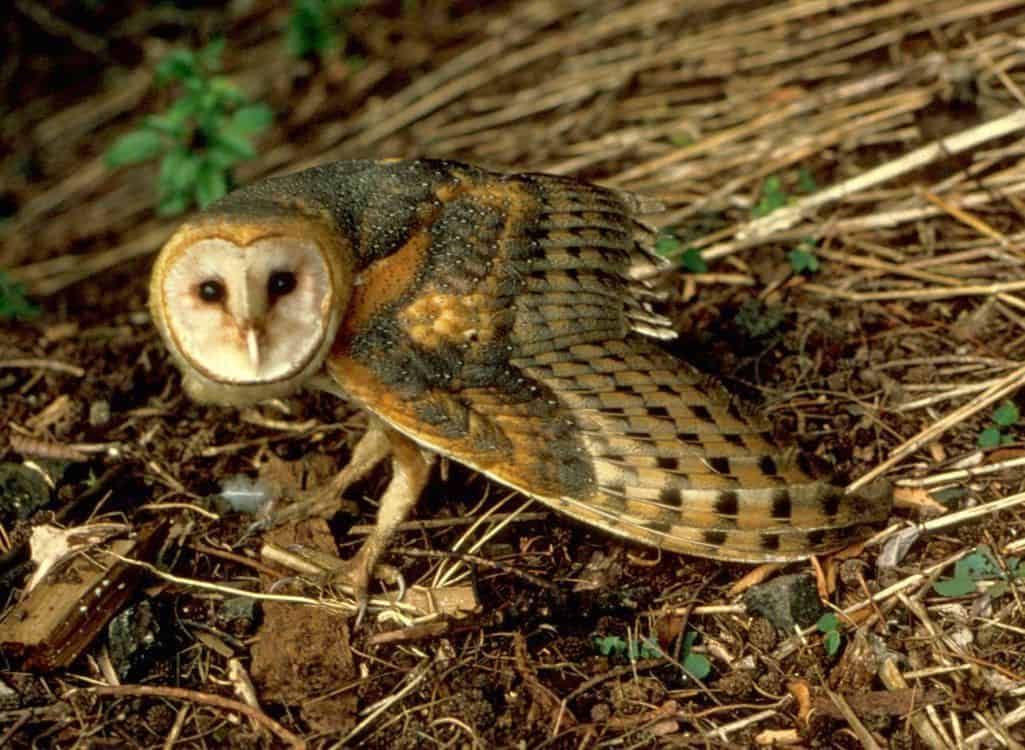
The distinctive shape of the barn owl’s face helps it detect quiet sounds that its prey makes.
©Zeillemaker, C.F – Public Domain by U.S. Fish and Wildlife Service – License
Appearance
The barn owl is an animal that is most known for its bright white, heart-shaped face. Their heads are smooth and, unlike many other owl species, they do not have ear tufts. The owl’s eyes are large and dark. Their heart-shaped faces are framed by brown and grey feathers, as is the backside of their wings and their bodies. The wings are short, rounded, and pale beneath. Sometimes their pale white breasts are spotted. Female owls with spots are more desirable to males.
These owls weigh approximately 400-600g, with the biggest barn owl weighing in at 700g or about 1.5 pounds. Males tend to be lighter in weight and smaller in size than females. These birds can be anywhere from 32 to 40cm in size (about 12.5 to 15 inches). Their wingspan is about 100-125cm (39 to 49 inches).
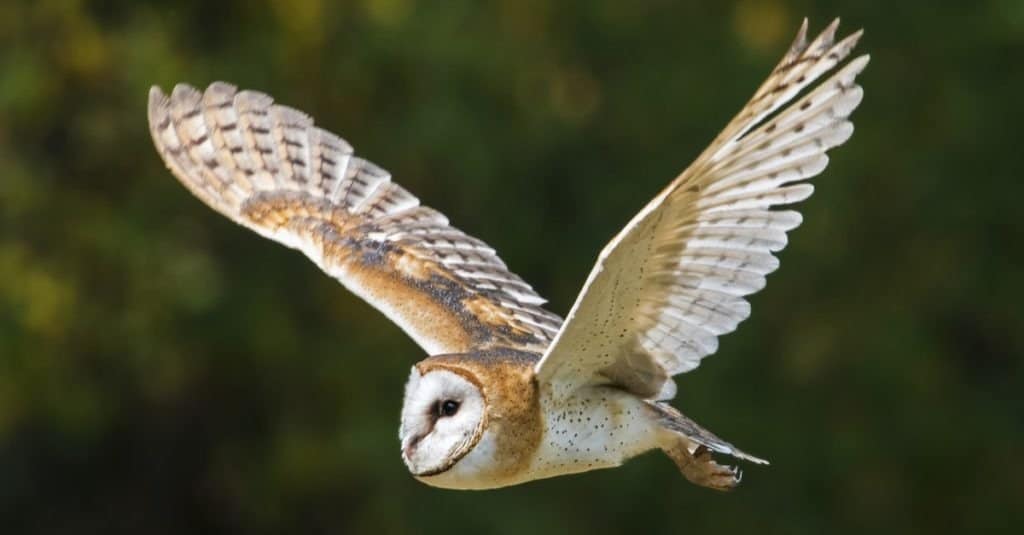
The wingspan of a barn owl can range from 100 to125cm (39 to 49 inches).
©Russ Heinl/Shutterstock.com
Behavior
These owls are nocturnal birds that primarily hunt at night. Their facial disks help sound make its way to their ear holes, where they can better detect sounds. These owls swallow their prey whole and then regurgitate pellets after most of the animal has been digested. The size of these pellets can be up to 1.5 inches, and scientists use them to learn many facts about what the barn owl eats.
Their eyes are twice as sensitive as the human eye. This feature, as well as their large wingspan compared to their bodies, helps them silently hunt at night. They prefer to hunt in open fields.
The sounds that these owls make have been described as banshee-like. One of the most distinctive facts about the barn owl is its haunting screeches, not a hoot like most other owls.
These owls sleep in abandoned barns, which is where they get their names. They also prefer empty tree cavities and other hollow places.
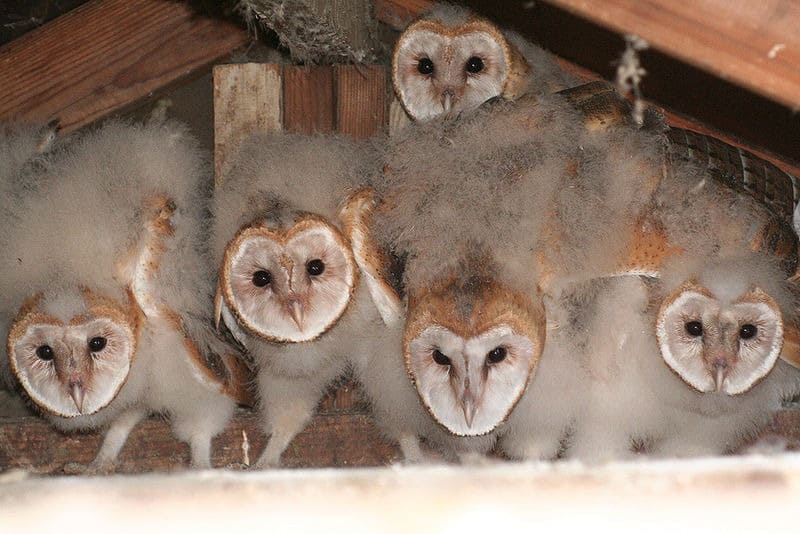
Barn owls often inhabit lofts in barns, even building nests there.
Habitat
The many subspecies of these owls can be found all over the world in various habitats. They are an adaptable species that can live in most environments, from desert to lush farmland.
Because these owls nest in barns and other abandoned buildings, they are comfortable living in cities, suburbs, and other places that put them in close contact with human beings.
Diet
These owls are birds of prey, and they mostly target rats and mice. Sometimes, by dissecting pellets, scientists have found the occasional frog, smaller bird species, or even fish.
Some of these owl species survive on an insect-based diet. These owls are smaller, island-dwelling species. Where they live, large food options tend to be scarce, so these owl subspecies have adapted to the environment.
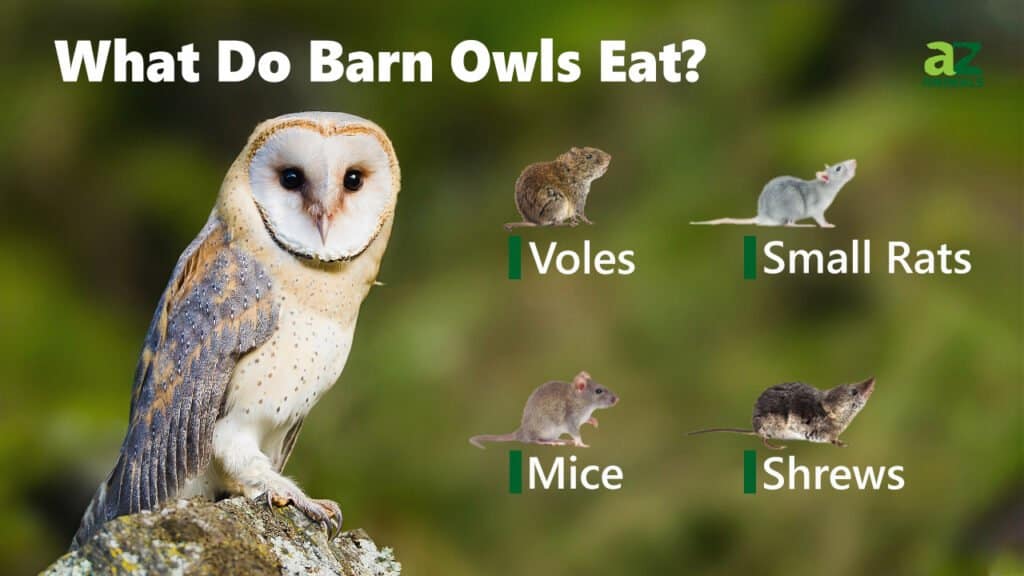
Predators and Threats
Opossums, eagles, and raccoons prey on baby barn owls and barn owl eggs. Other owl species, such as the great horned owl and the eagle owl, also prey on their barn owl cousins.
These owls are a Least Concern species in terms of population decline. Their populations remain steady worldwide, but rehabilitation projects do exist in areas where barn owls are vanishing.
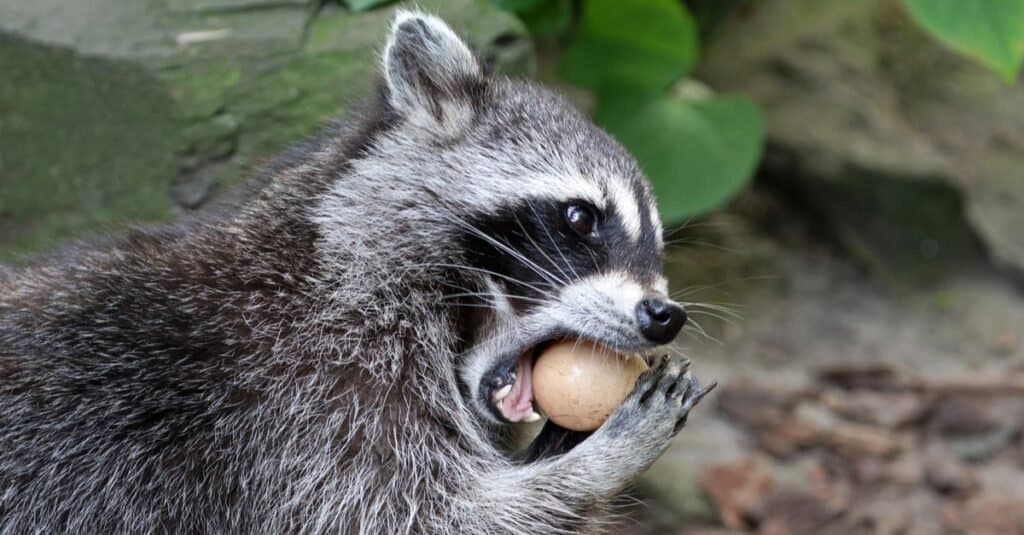
Raccoons are known to prey on baby barn owls and barn owl eggs.
©iStock.com/Edwin_Butter
Reproduction, Babies, and Lifespan
Male owls opt for a mid-flight display when they are ready to mate with a female. These maneuvers include “moth flight,” which is a maneuver in which male owls hover in midair in front of the female.
These owls can lay up to 2 nests per year and can breed year-round. They remain in one territory once they mate, and about 75% of all barn owls mate for life. These pair do “divorce” if they cannot produce enough young owlets together. When preparing to lay eggs, barn owls choose trees closer to the large, open fields where they enjoy hunting.
Females lay anywhere from 2 to 12 eggs, and the egg-laying takes place over multiple days. This spacing is so that the owlets do not hatch all at once. If food is abundant, the female will lay more eggs. Each egg incubates for about 30 days. Chicks leave the nest after the parents have cared for them for about 15 weeks.
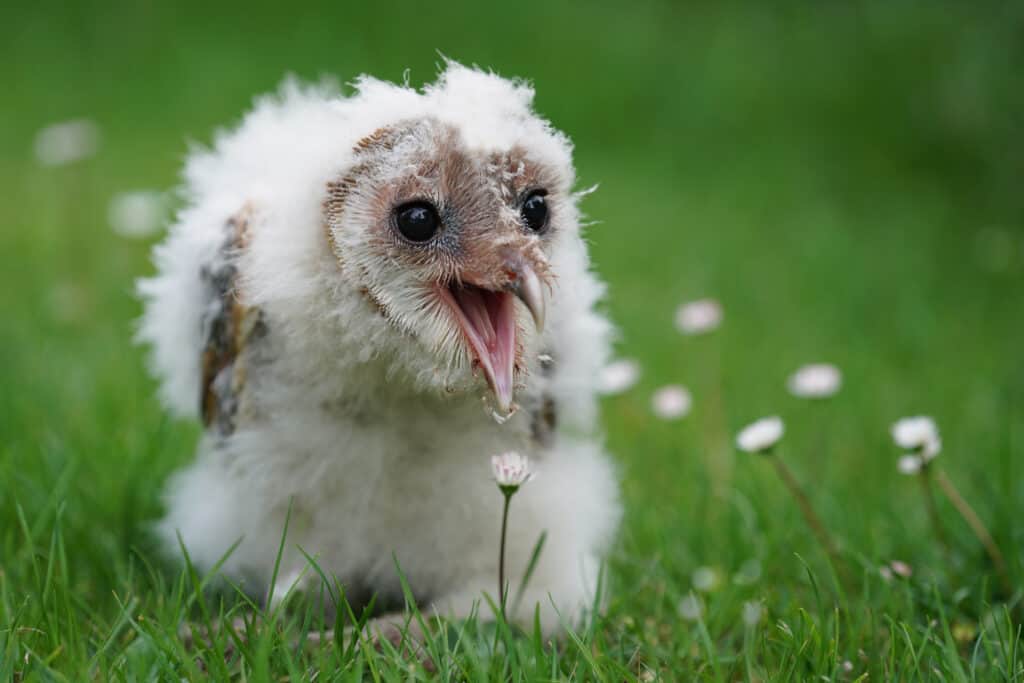
Barn owl chicks leave the nest after the parents have cared for them for approximately 15 weeks.
©Holger Kirk/Shutterstock.com
Population
Because these owls are so widespread, it is hard to get an accurate account of the population. Recent counts estimate that there are anywhere between 4 million and 10 million barn owls in the world.
This species is listed as one of Least Concern by the IUCN’s Red List. Habitat decline is the biggest threat to these owls, though their populations do remain mostly stable. The biggest way to help protect barn owls is to give them places to raise their young, such as providing nesting boxes.
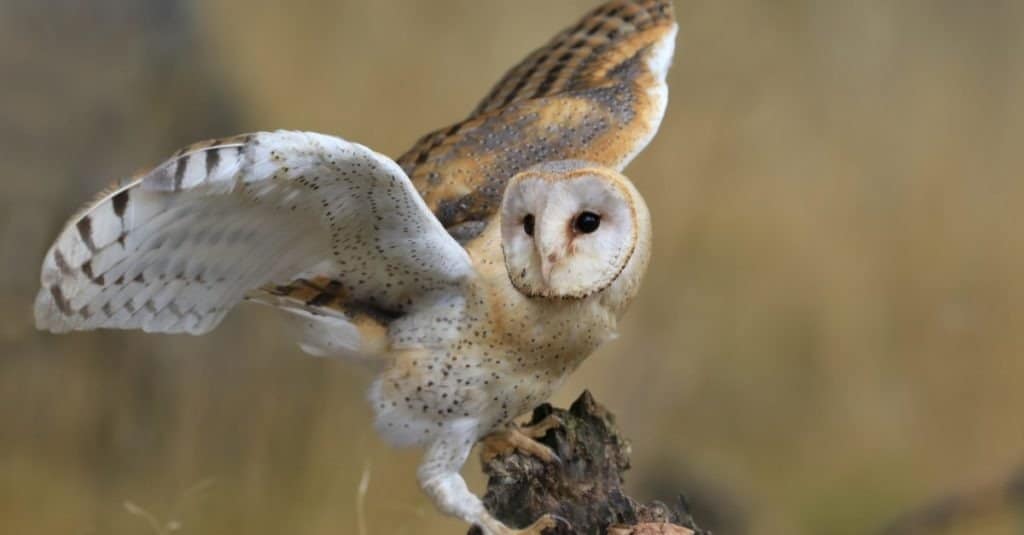
Though habitat loss is a threat to barn owls, these birds are listed as one of Least Concern by the IUCN’s Red List.
©Monika Surzin/Shutterstock.com
In the Zoo
Many zoos across the United States have become homes to these owls. The Cincinnati Zoo in Ohio hosts one of these owls in their Wings of the World exhibit. Many other zoos, including the Cosley Zoo in Indiana, the Pittsburgh Zoo in Pennsylvania, and the San Francisco Zoo in California. Odds are that wherever you are, there is likely a barn owl at a zoo or nature center nearby.
Around 970 of these owls are living in zoos worldwide. Many of these owls come to find their homes in zoos as a result of rescue operations. Dawn and Dusk, the resident owls at the Belfast Zoo found their permanent homes after being rescued. Another barn owl, Bubo-no-no, found a forever home at the Honolulu Zoo after being rescued as a chick by the Hawaiian Electric Company. Zoos often are vital in raising and rehabilitating owls that might not otherwise thrive in the wild.
View all 285 animals that start with BBarn Owl FAQs (Frequently Asked Questions)
Are Barn Owls herbivores, carnivores, or omnivores?
Barn Owls are Carnivores, meaning they eat other animals.
What Kingdom do Barn Owls belong to?
Barn Owls belong to the Kingdom Animalia.
What class do Barn Owls belong to?
Barn Owls belong to the class Aves.
What phylum to Barn Owls belong to?
Barn Owls belong to the phylum Chordata.
What family do Barn Owls belong to?
Barn Owls belong to the family Tytonidae.
What order do Barn Owls belong to?
Barn Owls belong to the order Strigiformes.
What type of covering do Barn Owls have?
Barn Owls are covered in Feathers.
What genus do Barn Owls belong to?
Barn Owls belong to the genus Tyto.
In what type of habitat do Barn Owls live?
Barn Owls live in open plains and low-lying woodlands.
What is the main prey for Barn Owls?
Barn Owls prey on small mammals, fish, and birds.
What are some predators of Barn Owls?
Predators of Barn Owls include foxes, raccoons, and wild dogs.
What are some distinguishing features of Barn Owls?
Barn Owls have white, heart-shaped faces and large, dark eyes.
How big are barn owls?
Barn owls can weigh up to 700g (or 1.5lbs) and can be as long as 32 to 40cm (12.5 to 16 inches). Their wingspans can be up to three feet long.
What does a barn owl sound like?
These owls are known for their screeching sounds, like that of a banshee.
What does a barn owl look like?
Barn owls have bright, pale white faces and underbellies. They have grey and brown feathers on their backs and the backs of their wings. They have a large wingspan with respect to their body size and forms a rounded shape.
Where does a barn owl live?
Barn owls require large, open habitats in order to hunt, such as marshlands, fields, or agriculture fields. They tend to nest in trees or abandoned structures like barns and silos. Subspecies of the barn owl Tyto alba can be found on every continent except Antarctica.
Are barn owls dangerous?
Barn owls are not particularly dangerous. They are quite shy and will generally fly away when approached by humans, even if it means abandoning their nests and eggs.
Does barn owl migrate?
Barn owls are non-migratory, meaning they stay in their environment year-round.
How many eggs does barn owl lay?
Barn owls lay up to 12 eggs in one nest. They lay eggs up to two times a year. They lay more eggs if more prey is available.
How fast does a barn owl fly?
Barn owls can fly between 10 to 20 mph when hunting for their prey.
What is barn owl’s wingspan?
The barn owl’s wingspan is 39.4in – 49.2 in, depending on their sex.
When do barn owls leave the nest?
Baby barn owls stay in their nest for 50-55 days after hatching. The parents will assist their chicks until the baby owls become independent enough to hunt for themselves.
What is an interesting fact about Barn Owls?
Barn Owls are found everywhere around the world!
What is the scientific name for the Barn Owl?
The scientific name for the Barn Owl is Tyto alba.
What is the lifespan of a Barn Owl?
Barn Owls can live for 5 to 10 years.
How do Barn Owls have babies?
Barn Owls lay eggs.
What are the differences between a Barred owl and a Barn owl?
The key differences between Barred and Barn owls are appearance, size, and behavior. The main way to tell them apart is to look for the distinct white, heart-shaped face of the barn owl. But this is far from the only way to tell which is which.
What are the key differences between true owls and barn owls?
The key differences between true owls and barn owls are appearance feeding habits, habitats, calls, and lifespan.
How to say Barn Owl in ...
Thank you for reading! Have some feedback for us? Contact the AZ Animals editorial team.
Sources
- Belfast Zoo, Available here: http://www.belfastzoo.co.uk/animals/white-breasted-barn-owl.aspx
- Honolulu Zoo Society, Available here: https://www.honoluluzoo.org/animals/barn-owl/#1554506779695-28e373d6-d27a
- All About Birds, Available here: https://www.allaboutbirds.org/guide/Barn_Owl/id
- Audubon, Available here: https://www.audubon.org/field-guide/bird/barn-owl
- National Geographic, Available here: https://www.nationalgeographic.com/animals/birds/b/barn-owl/
- American Bird Conservancy, Available here: https://abcbirds.org/bird/barn-owl/
- The Barn Owl Trust, Available here: https://www.barnowltrust.org.uk/barn-owl-facts/








